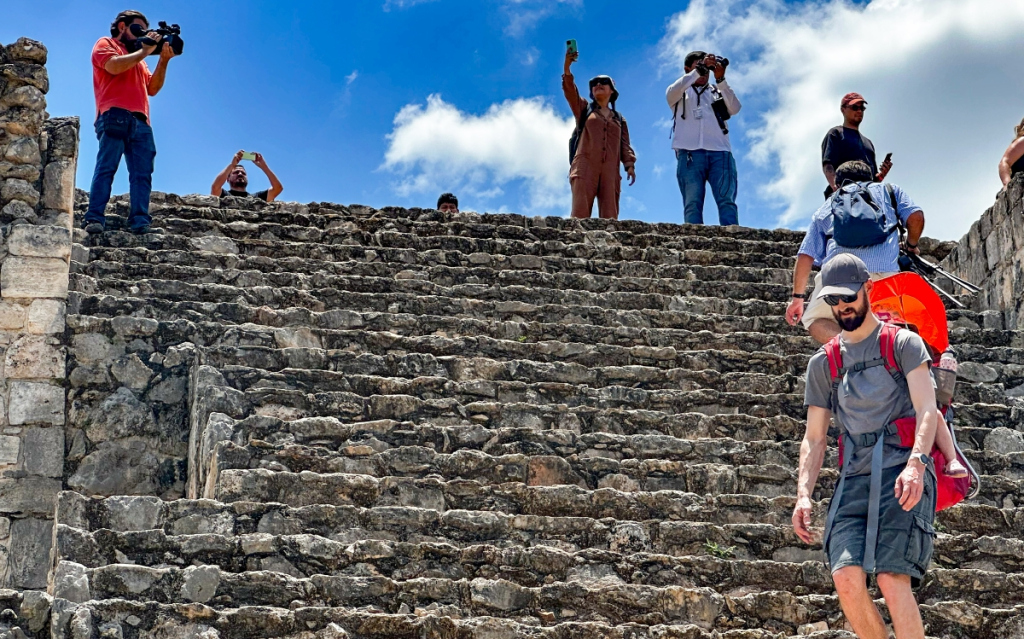Mérida, Mexico — The archaeological site of Ek Balam, a once-thriving Maya city, continues to reveal its secrets as excavations uncover new details about its political, artistic, and commercial significance. Located in the heart of the Yucatán Peninsula, the site offers visitors a chance to explore its ceremonial center, climb its structures, and witness ongoing archaeological discoveries.
A Convergence of Architectural Styles
Ek Balam, whose name translates to "Black Jaguar" in Yucatec Maya, stands out for its unique blend of architectural influences. According to experts, the site reflects a mix of Puuc-style traditions, Gulf Coast elements, and Campeche-inspired designs, creating an unparalleled diversity in its structures.
During its peak, Ek Balam flourished as a hub for trade and artistry. Hieroglyphic inscriptions found on its buildings speak of political alliances, sophisticated social organization, and the city’s prominence.
"It was a true school for scribes," said one specialist. "Its murals, twin sculptures, and polychrome walls showcase the aesthetic richness that once adorned its buildings."
Exploring Ek Balam’s Civic-Ceremonial Center
The main attraction for visitors is the site’s civic-ceremonial center, dominated by the Acropolis—a massive structure housing the remains of King Ukit Kan Lek Tok’ and his father. The site features decorated chambers, unique reliefs, and traces of stucco believed to have been painted in vivid reds, greens, blues, yellows, and blacks.
Unlike many other Maya ruins, several structures at Ek Balam remain climbable, offering panoramic views of the surrounding jungle. Visitors can also explore the Popolnah (a council house), the Ball Court—which divides the city into northern and southern plazas—and newly established ecological trails that showcase local flora, fauna, and unrestored ruins.
Ongoing Excavations and Future Discoveries
Despite more than 50 years of archaeological research, much of Ek Balam remains unexplored. Excavations in the West Plaza and other areas of the Acrópolis, which began in 2023, continue to uncover new findings. Notably, the site’s cenote has yet to be explored underwater, leaving the potential for future discoveries.
Ek Balam is one of 18 publicly accessible archaeological sites in Yucatán, out of more than 6,000 registered in the state. While it receives fewer visitors than Chichén Itzá or Cobá, its popularity is growing. During Holy Week 2025, the site welcomed over 9,000 visitors, and if current trends continue, it could reach 160,000 visitors by year’s end.
Admission Fees and Practical Information
General admission for foreign visitors and Mexicans without valid ID costs 581 pesos (including a 100-peso federal fee and a 481-peso state fee). Mexican citizens with valid identification pay 232 pesos, while Yucatán residents with an INE card pay only 100 pesos. On Sundays, entry is free for Mexican nationals with ID.
Ek Balam remains a testament to the Maya civilization’s grandeur, offering a less crowded but equally fascinating alternative to more well-known ruins in the region.
Discover more from Riviera Maya News & Events
Subscribe to get the latest posts sent to your email.
